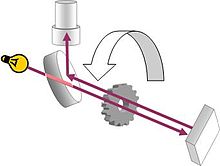Speed of light = 186,282 miles per second
Time a form of describing a distance between today and tomorrow or passage of time which is only relevant in this plane of etherial existence anyway I.E. 1 day = 1 revolution of the planet on its axis 1 year = how long it takes for the earth to orbit the Sun
The day is divided into 24 equal parts each = 1 hour and so on
Since we have calculated the speed of light and because we can observe Solar flares through telescopes etc. and can corroberate our observations with unmanned craft sent towards the sun in recent years we can ascertain an exact distance within 4 parts per billion of accuracy by calculating the moment of the flare and how long it takes for the disturbance of that flare to reach the earth from the sun
The mean distance of our planet from our sun if we use miles instead of kilometers is 92,955,807.3 miles
divide that sum by the time it takes for a beam of light to come from the sun to earth (Aprrox. 8 minutes) and you get the above stated figure of the speed of light.
Knowing this you can calculate the distance of any cellestial body with the very same formula
Time a form of describing a distance between today and tomorrow or passage of time which is only relevant in this plane of etherial existence anyway I.E. 1 day = 1 revolution of the planet on its axis 1 year = how long it takes for the earth to orbit the Sun
The day is divided into 24 equal parts each = 1 hour and so on
Since we have calculated the speed of light and because we can observe Solar flares through telescopes etc. and can corroberate our observations with unmanned craft sent towards the sun in recent years we can ascertain an exact distance within 4 parts per billion of accuracy by calculating the moment of the flare and how long it takes for the disturbance of that flare to reach the earth from the sun
The mean distance of our planet from our sun if we use miles instead of kilometers is 92,955,807.3 miles
divide that sum by the time it takes for a beam of light to come from the sun to earth (Aprrox. 8 minutes) and you get the above stated figure of the speed of light.
Knowing this you can calculate the distance of any cellestial body with the very same formula
Solar flares? Corroboration with unmanned spacecraft?
Sorry but I completely reject your methods for measuring the distance of the sun.
And speed of light is dodgy too.
you will have to do better.



